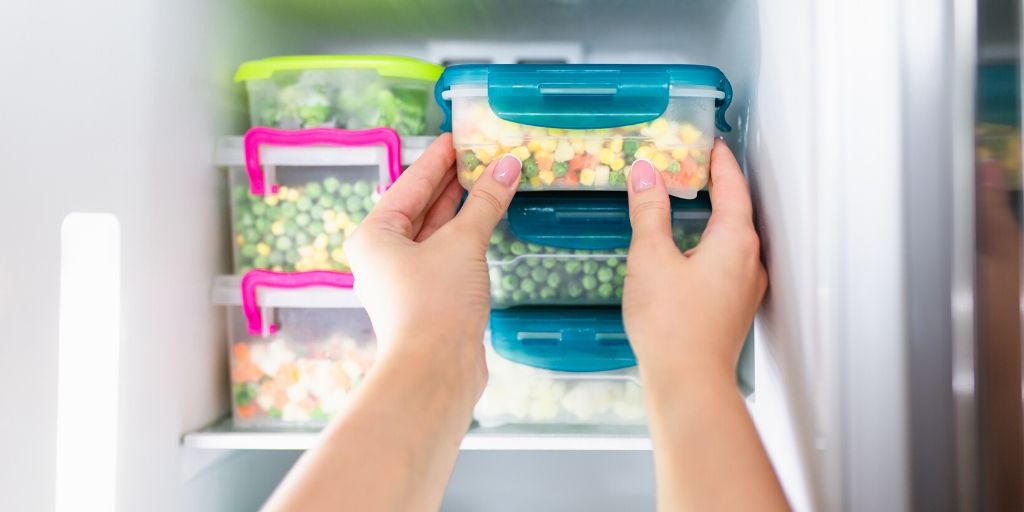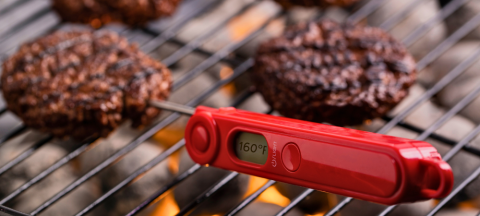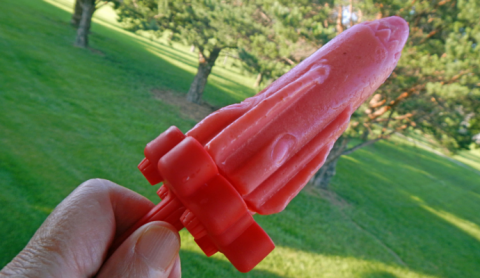
According to the Food and Drug Administration (FDA), proper home food storage helps maintain safety as well as food quality by keeping flavor, color, texture and nutrients in food.
Room temperature such as in a pantry or in a cupboard: Many staples and canned foods have a relatively long shelf life. However, foods stored for longer than recommended times or beyond date on the package may change quality, color and flavor.
Refrigerator: Refrigerators should be kept at or below 40°F (4°C). Use a refrigerator thermometer to check! These short, but safe, time limits will keep refrigerated food from spoiling or causing someone to become ill. Because product dates are not a guide for safe use of a product, here are a few tips to follow:
- Purchase the product before "sell-by" or expiration date.
- Follow handling recommendations on product.
- Keep meat and poultry in its package until just before using.
- If freezing meat and poultry in its original package longer than 2 months, cover these packages with heavy-duty foil, plastic wrap or freezer paper; or place the package inside a freezer bag.
Freezer: Freezers should be kept at 0°F (-18°C) or lower when measured with a refrigerator/freezer thermometer. Because freezing keeps food safe indefinitely, the following recommended freezer storage times are for quality (flavor, color, texture, etc.) only.
Home Food Storage Chart
This chart contains recommended storage times for best quality in the pantry and freezer and for best quality and safety in the refrigerator:
- Meat, Poultry, Fish and Eggs
- Milk and Dairy Products
- Fruits
- Vegetables
- Dry Goods/Staples
- Condiments, Sauces and Canned Goods
- Baked Goods
| Food | Room temperature such as in a pantry or in a cupboard (50 to 70°F) | Refrigerator at 40°F or below | Freezer at 0°F or below (storage times are for quality only) |
|---|---|---|---|
| Fresh beef, veal, lamb or pork (steaks, chops or roasts) | Not safe | 3 to 5 days | 4 to 12 months |
| Ground beef, turkey, veal, pork or lamb, stew meat | Not safe | 1 to 2 days | 3 to 4 months |
| Bacon | Not safe | Within 1 week of "Use by" date (unopened); 1 week (opened) | 1 month |
| Bacon, fully cooked and shelf stable | 6 months or until the "use-by" date on the package (unopened) | 5 to 14 days (opened) | 3 months |
| Sausage, raw from chicken, turkey, pork or beef | Not safe | 1 to 2 days | 3 to 4 months |
| Sausage, fully cooked, from chicken, turkey, pork or beef | Not safe | 1 week | 1 to 2 months |
| Ham, canned, labeled "Keep Refrigerated" | Not safe | 6-9 months (unopened); 3-5 days (opened) | 1 to 2 months (opened) |
| Ham, fully cooked, store-wrapped, slices, half or spiral cut | Not safe | 3 to 4 days | 1 to 2 months |
| Ham, fully cooked, store-wrapped, whole | Not safe | 1 week | 1 to 2 months |
| Ham, fully cooked, vacuum-sealed at plant | Not safe | "Use by" date if available or 2 weeks (unopened); 3 to 5 days (opened) | 1 to 2 months |
| Hot dogs | Not safe | 2 weeks (unopened); 1 week (opened) |
1 to 2 months |
| Lunch meats; sliced at store or deli | Not safe | 3 to 5 days | 1 to 2 months |
| Lunch meats; prepackaged | Not safe | 2 weeks or "Use by" date (unopened); 3-5 days (opened) | 1 to 2 months |
| Venison | Not safe | 2 to 3 days | 2 to 3 months (ground); 6 to 9 months (roasts and steaks) |
| Chicken or turkey, whole | Not safe | 1 to 2 days | 1 year |
| Chicken or turkey, pieces | Not safe | 1 to 2 days | 9 months |
| Commercially canned meat, poultry or fish | 2 to 5 years | 3 to 4 days (opened) | - |
| Fresh fish or shellfish | Not safe | 1 to 2 days | 3 to 6 months |
| Eggs, raw in shell | Not safe | 3 to 5 weeks |
Do not freeze in shell. Beat yolks and whites together, then freeze (freezing eggs)
|
| Raw egg yolks, whites | Not safe | 2 to 4 days |
1 year (freezing eggs)
|
| Hard cooked eggs | Not safe | 1 week | Do not freeze |
| Liquid pasteurized eggs or egg substitutes (unopened) | Not safe | 10 days | 1 year |
| Liquid pasteurized eggs or egg substitutes (opened) | Not safe | 3 days | Do not freeze |
| Leftovers with meat, fish, poultry or egg | Not safe | 3 to 4 days | 2 to 3 months |
Return to Top of Page.
Return to Top of Page.
| Always refrigerate fruit that is purchased pre-cut or packaged. Wash all produce thoroughly under running water before preparing and/or eating. Washing fruit with soap, detergent, or commercial produce wash is not recommended. These storage times are approximate - some fruits may keep longer or shorter than the time listed - always check for signs of spoilage. For more information, check out Selecting and Serving Produce Safely from the FDA. | |||
|---|---|---|---|
| Food | Room temperature such as in a pantry or in a cupboard (50 to 70°F) | Refrigerator at 40°F or below | Freezer at 0°F or below (storage times are for quality only) |
| Apples | 3 weeks | 4 to 6 weeks |
8 months (freezing apples) |
| Avocados | Until ripe - tender, fully developed and ready to eat | 3 to 4 days |
8 months (freezing avocados)
|
| Bananas | Until ripe - tender, fully developed and ready to eat | 3 days |
2 to 3 months (freezing bananas)
|
| Blueberries | Not recommended | 1 to 2 weeks |
8 to 12 months (freezing blueberries)
|
| Citrus fruits - orange, grapefruit, clementines, etc. | 10 days | 10 to 21 days |
4 to 6 months (freezing citrus fruits)
|
| Dried fruit | 6 months (unopened); 1 month (opened) | 6 months | |
| Grapes | 1 day | 1 week |
1 month (whole) (freezing grapes)
|
| Melons | Until ripe - tender, fully developed and ready to eat | 2 weeks (uncut), 2 to 4 days after cutting |
1 month for balled melon (freezing melons)
|
| Peaches, nectarines, plums or pears | Until ripe - tender, fully developed and ready to eat, then 1-2 days | 3-5 days | |
| Pineapple | Until ripe - tender, fully developed and ready to eat, then 1-2 days | 5 to 7 days |
8 to 12 months (freezing pineapple)
|
| Strawberries | Not recommended | 2 to 3 days |
8 to 12 months (freezing strawberries)
|
Return to Top of Page.
| Always refrigerate vegetables that are purchased pre-cut or packaged. Wash all produce thoroughly under running water before preparing and/or eating. Washing vegetables with soap, detergent, or commercial produce wash is not recommended. These storage times are approximate - some vegetables may keep longer or shorter than the time listed - always check for signs of spoilage. For more information, check out Selecting and Serving Produce Safely from the FDA. | |||
|---|---|---|---|
| Food | Pantry or cupboard at room temperature (50 to 70°F) | Refrigerator at 40°F or below | Freezer at 0°F or below (storage times are for quality only) |
| Asparagus | - | 3 to 4 days |
5 months (freezing asparagus)
|
| Bagged greens | - | 3 to 5 days (unopened); 2 days (opened) | Does not freeze well |
| Broccoli | - | 3 to 5 days |
10 to 12 months (freezing broccoli)
|
| Brussels sprouts | - | 3 to 5 days |
10 to 12 months (freezing Brussels sprouts)
|
| Cabbage | - | 1 to 2 weeks |
10 to 12 months (freezing cabbage)
|
| Carrots | - | 2 to 3 weeks |
10 to 12 months (freezing carrots)
|
| Cauliflower | - | 3 to 5 days |
10 to 12 months (freezing cauliflower)
|
| Celery | - | 1 to 2 weeks |
10 to 12 months (freezing celery)
|
| Corn on the cob | - | 1 to 2 days |
8 months (freezing corn)
|
| Cucumbers | - | 4 to 6 days | Does not freeze well |
| Dried beans, lentils or split peas | 1 to 2 years | 3 to 4 days (cooked) | 6 months (cooked) |
| Onions | 1 month | 2 months |
10 to 12 months (freezing onions)
|
| Potatoes | 1 month | - |
10 to 12 months (freezing potatoes)
|
| Spinach or leaf lettuce | - | 3 to 7 days |
10 to 12 months (freezing spinach); lettuce does not freeze well
|
| Summer squash or zucchini | 1 to 5 days | 4 to 5 days |
10 to 12 months (freezing summer squash or zucchini)
|
| Tomatoes | Until ripe, then 7 days | 1 to 2 days if ripe, otherwise store at room temperature |
2 months (freezing tomatoes)
|
| Winter squash | 1 to 2 months | 1 to 2 weeks (cut) |
10 to 12 months (freezing winter squash)
|
Return to Top of Page.
Return to Top of Page.
Return to Top of Page.
Return to Top of Page.
Sources:
Cold Food Storage Chart, United States Department of Agriculture
FoodKeeper App, FoodSafety.gov, U.S. Department of Health and Human Services
Food Storage, The University of Georgia Cooperative Extension
Food Storage Guide, North Dakota State University Extension Service
Freezing, National Center for Home Food Preservation
How long can you keep dairy products like yogurt, milk, and cheese in the refrigerator? United States Department of Agriculture (USDA)
Preserve Smart, Colorado State University Extension
Refrigeration and Food Safety, United States Department of Agriculture (USDA)
Refrigerator and Freezer Storage Chart, Food and Drug Administration (FDA)
Proper Care and Handling of Venison from Field to Table, Penn State Extension
This resource has been peer-reviewed.
Feedback Form
Feedback Form
If you do not see the article, please scroll up the page.







